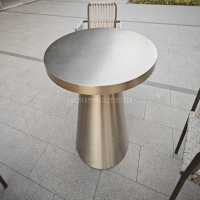Welcome to the website for landscape facilities products and knowledge.
What are the most important factors influencing the choice of materials for minimal environmental impact?
The selection of materials with minimal environmental consequences represents a critical decision point in sustainable development. Several interconnected factors determine a material's ecological footprint, with life cycle assessment standing as the foundational methodology. This comprehensive evaluation examines environmental impacts from raw material extraction through manufacturing, transportation, usage, and eventual disposal or recycling.
Embodied carbon has emerged as a primary consideration, quantifying the total greenhouse gas emissions associated with a material throughout its life cycle. Materials with high embodied energy, such as conventional concrete and certain plastics, typically generate greater environmental impacts than their low-carbon alternatives. The renewability of materials further influences sustainability, with rapidly regenerating resources like bamboo and cork offering advantages over finite materials that require extensive mining or harvesting.
Durability and maintenance requirements significantly affect long-term environmental performance. Materials that withstand degradation while demanding minimal upkeep typically demonstrate superior life cycle performance despite potentially higher initial environmental costs. The potential for reuse, recycling, or safe biodegradation at end-of-life further distinguishes environmentally preferable materials, aligning with circular economy principles that prioritize resource conservation.
Local availability reduces transportation impacts while supporting regional economies, whereas responsibly sourced materials certified through programs like FSC for wood products ensure sustainable harvesting practices. Material health considerations have gained prominence, with low-VOC emissions and non-toxic compositions benefiting both environmental quality and human wellbeing.
Ultimately, the most environmentally responsible material choices balance these factors within specific project contexts, recognizing that optimal solutions vary based on application, location, and available technologies. This multifaceted approach enables designers, architects, and manufacturers to make informed decisions that genuinely reduce ecological harm while meeting functional requirements.
Related search:

Recommendation
Outdoor Metal Table - Classic Outdoor Furniture, Stainless Steel Table, Durable and Reliable